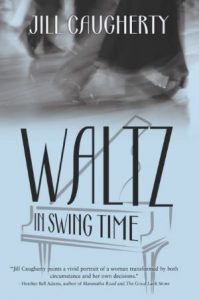What’s at Stake in Your Novel?
 What keeps readers riveted to a favorite novel, compulsively turning the pages? Sure, fast-paced action with car chases, gun fights, drug deals gone awry, and racy sex scenes might help, but many writers of character-driven fiction don’t rely on these techniques to ratchet up the tension. Instead, we often create conflict, and in turn reader engagement, by exploring what’s ultimately at stake for our characters as they arrive at critical decisions or turning points.
What keeps readers riveted to a favorite novel, compulsively turning the pages? Sure, fast-paced action with car chases, gun fights, drug deals gone awry, and racy sex scenes might help, but many writers of character-driven fiction don’t rely on these techniques to ratchet up the tension. Instead, we often create conflict, and in turn reader engagement, by exploring what’s ultimately at stake for our characters as they arrive at critical decisions or turning points.
As Donald Maass discusses in his book, The Breakout Novelist: How to Craft Novels That Stand Out and Sell, readers care because the protagonist cares. One way to keep readers engaged is by giving a principled protagonist – one with a strong moral code — a high stake decision. In other words, the main characters of a novel should wrestle with decisions that matter, which may irrevocably change the course of their lives in one of several drastically different directions.
During the process of shopping my debut literary/historical novel, Waltz in Swing Time, to agents, I was thrilled to receive a “revise and resubmit” request from a well-known New York agency. The agent’s main feedback was powerful and concise: “Raise the stakes.” I took time to reflect on this advice and decide how to respond, but the meaning was clear: Cut scenes that are irrelevant to the main plot; keep the tension high; and don’t protect the protagonist and her family from harm or trouble.
For several months, I expurgated irrelevant chapters and winnowed down the action into scenes that tested the protagonist’s strength, will, and character. Although the agent ultimately rejected the version I resubmitted, her advice resonated with me, and I continued reflecting upon it as I shopped the novel to other agents and small, independent publishers.
Over the next two years, before I landed a deal with my publisher, Black Rose Writing, I continued thinking about ways to raise the stakes in my novel. Eventually, I realized that while a chain reaction of events in a story plays an important role in testing the protagonist and propelling the action, the decisions she makes should be equally critical in testing her moral code and conflicting desires.
Readers feel the most sympathy for a character who is struggling or conflicted. By showing these struggles both through external events that might throw a character into turmoil, and decisions that torment her conscience, writers can compel readers to race to learn how the protagonist responded and what she decided.
I concluded that the missing ingredient in Waltz in Swing Time was a high stake decision for my strong female protagonist, Irene Larsen. I had given her a dream, the desire to leave her family’s farm in nineteen-thirties Utah and become a musician. I had also given her a series of tragedies and hardships that challenged her dream, and tested her inner strength and character. Finally, although I had given Irene a decision, it didn’t make readers ponder over what she had to lose. Fortunately, making Irene’s decision into a high stakes choice didn’t require a huge re-write. Putting her at a crossroads between two conflicting parts of her life strengthened the story.
As I write my next novel, I often pause to consider whether I am raising the stakes both in the story’s action and the protagonist’s decisions. After considerable thought, I arrived at a strategy that may be helpful to other writers both in deciding whether a story is compelling enough to turn into a full-blown novel, and finally pitching that story to agents and publishers. Here is the premise:
Regardless of where you are in the process of writing your novel, summarize your plot in a few short paragraphs with a compelling pitch.
The first sentence or paragraph should intrigue the reader by describing the protagonist’s present circumstances and hinting at a desire.
The second sentence or paragraph should illustrate a turning point in the story that forces a change or conflict. For example, maybe the protagonist receives a phone call from a stranger that raises serious concerns, or the protagonist endures a personal blow, causing her to suffer financial or medical consequences. Note that you can eliminate point a or combine it with b.
The third sentence or paragraph should hook the reader by introducing a decision the protagonist must make, and in turn intriguing the reader into wanting to learn what happens.
Does the pitch succeed in introducing conflict and hinting at a potential decision the protagonist must make? If yes, it will probably make for an engaging novel, which will keep the reader turning pages. Start writing or finish writing it!
If you have already written the novel, use your pitch when submitting your manuscript to prospective agents.
If the pitch doesn’t succeed, you may need to re-work the plot and turning points of your novel so your main characters undergo struggles and are forced to make critical decisions.
For examples of book blurbs that use this strategy, view these links: A Letter From Munich and Wildland.
Ultimately, both the high-stakes events and decisions a protagonist faces are equally important in riveting readers to a character-driven novel.
Bio: Jill Caugherty is the author of the debut novel WALTZ IN SWING TIME (Black Rose Writing, April 2020). Her short stories have been published in 805Lit and Oyster River Pages, and her debut short story, “Real People,” was nominated for the 2019 PEN/Robert J. Dau Short Story Prize for Emerging Writers.
An award-winning marketing manager with over twenty-five years of experience in the high tech industry, she lives in Raleigh, North Carolina with her husband and daughter.
Follow her on Twitter @JillCaugherty
Learn more on her website https://www.jillcaugherty.com
WALZ IN SWING TIME, Jill Caugherty
 Growing up in a strict Utah farm family during the Great Depression, Irene Larsen copes with her family’s hardship by playing piano. Even after an unthinkable tragedy strikes, Irene clings to her dream of becoming a musician. When a neighbor’s farm is foreclosed, Irene’s brother marries the neighbor’s daughter, who moves in with the Larsens and coaches Irene into winning leading roles in musicals. Clashing with her mother, who dismisses her ambition as a waste of time and urges her to become a farmer’s wife, Irene leaves home.
Growing up in a strict Utah farm family during the Great Depression, Irene Larsen copes with her family’s hardship by playing piano. Even after an unthinkable tragedy strikes, Irene clings to her dream of becoming a musician. When a neighbor’s farm is foreclosed, Irene’s brother marries the neighbor’s daughter, who moves in with the Larsens and coaches Irene into winning leading roles in musicals. Clashing with her mother, who dismisses her ambition as a waste of time and urges her to become a farmer’s wife, Irene leaves home.
During a summer gig at Zion National Park, where Irene sings in a variety show for Depression-weary tourists, she meets professional dancer Spike, a maverick who might be her ticket to a musical career. But does pursuing her dream justify the steep price of losing her home and family?
Alternating between Irene’s ninetieth year in 2006 at an assisted living home and her coming-of-age in the thirties, Waltz in Swing Time is a poignant tale of mother-daughter relationships, finding hope amidst loss, and forging an independent path, against all odds. It will resonate with readers of Paula McClain, Rae Meadows, Therese Anne Fowler, and Amy Tan.
“Over the course of this bright novel, Caugherty manages to seamlessly transition between two wildly different decades while maintaining a fresh, youthful voice—which is essential in a book about an ambitious dreamer who struggles through hard times… It’s a hopeful yet realistic story, and the letters that Irene receives from her future husband are a particular joy to read… A reflective tale of growing up creative in a stifling environment and finding true love.” -Kirkus Reviews
“Waltz in Swing Time is a moving account of a life long-lived, the extraordinary stories behind a seemingly ordinary woman. Shifting masterfully between the past and present, Caugherty renders the indignities of old age and the early history of Irene’s life with equal richness. A lovely debut novel from a deft and insightful writer.” Rae Meadows, bestselling author of I Will Send Rain and Mercy Train
BUY THE BOOK HERE
Category: Contemporary Women Writers, How To and Tips






























